Value Midrange Common Components
While AMD and Intel architectures differ in sockets and sometimes memory configurations, there is more that is the same in the two systems than there is that is different. For that reason the Intel and AMD Value Midrange Systems share a number of common components.
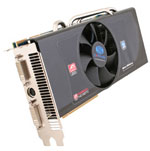 |
For video card best value we have paired the Sapphire Radeon HD 4870 1GB with both the Intel and AMD systems. As pointed out in the recent Holiday 2008 GPU Guide, the 4870 1GB is the minimum card we use internally for gaming comparisons. The Sapphire was our guide choice, but $230 seems the going rate for the 4870 1GB these days. It is available from MSI, Diamond, ASUS, HIS, Power Color, and others so you can shop for the best buy.
On the Intel system, the Gigabyte GA-EP45-UD3P motherboard provides a second PCI x16 slot. Video performance can be improved even further by adding a second Radeon HD 4870 1GB in CrossFire mode. You can also start with two 4870 512MB video cards that are now available for as little as $180 each from Power Color. This will provide 4870 CrossFire for a video card cost for both cards of just $360 total. The motherboard choice for AMD is the Foxconn A79A-S, which also provides multiple x16 slots for CrossFire. The same video options apply to the AMD Value Midrange system.
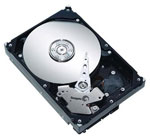 |
Hard drive capacity continues to grow, as you can see in our selection of the Seagate Barracuda 1TB drive (1000GB). While the Seagate 1.5TB drive was plagued with problems at its release, the performance and reliability of the 1TB Seagate has been excellent in our testing so far. For a price of around $100 the value is incredible. While there are differences between hard drives, outside of running benchmarks most people aren't likely to notice the difference in performance between Western Digital, Seagate, Samsung, Hitachi, and other major brands. All are worthy of consideration if the price per gigabyte (or terabyte) is right.
 |
We feel the optical drive for a best value midrange system needs to play Blu-Ray disks. The flexible LG GGC-H20LK has the ability to read both Blu-Ray and HD format disks. It also can burn DVDs at 16x speed in single or dual-layer formats. It cannot, however, burn 25GB/50GB Blu-Ray disks; adding that capability raises the cost to around $200 to $250. BD burners like the $200 LITE-ON 4X BD-R 12X DVD+R 4X Blu-ray DVD-ROM or the $230 LG 6X Blu-Ray Burner GGW-H20LK are good choices.
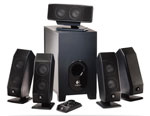 |
Cases are often very personal choices when it comes to features, but the Cooler Master RC-690-KKN1-GP is one of our favorites and it is also very well regarded by our readers. It comes standard with three 120mm fans for excellent cooling and low noise, and the power supply mounts in the bottom of the case. Audio, USB, Firewire, and eSATA ports are on top of the case, which we find an ideal location. The front bays are also ventilated metal mesh for cooling and appearance. If you prefer a more traditional case configuration, the Cooler Master Mystique, also selling for $80, mounts the PSU on top, provides font panel jacks, and is loaded with expansion ports and two 120mm fans.
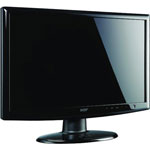 |
The last major component to discuss is the display, and here the tilt was toward best value at full 1080p HD (1920x1080) resolution. The new class of 16:9 21.5" LCD monitors provide true 1080p resolution at the break-through price of just $199. That stellar value shows just how far LCD technology has progressed. If your budget allows, or you just prefer a slightly bigger screen at the same resolution, you can move up to a 24" 16:9 1080p LCD that is selling today for around $300. Alternately, you can downgrade the resolution to 1680x1050 for slightly larger pixels (i.e. more readable text) if you purchase a 22" LCD and save a bit of money.
While the Creative Sound Blaster X-Fi Xtreme Audio is not the best sound card on the market, it is definitely tops in game compatibility. This Creative X-Fi card does a good job with audio, won't break the bank at $50, and it is a great choice for either set of powered speakers. Some would argue that onboard sound is all you need for a $1500 system, and if you are inclined to agree or have a really tight budget, you can save $50 on either the Intel or AMD Value Midrange builds just by using onboard sound.
 |
The Logitech X-540 has been a perennial favorite of users as a reasonably priced but good performing, powered 5.1 computer speaker system. It will certainly not challenge the performance of a separate Dolby amplifier powering audiophile speakers, but it will provide surprisingly good sound for the price.
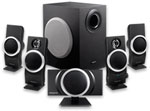 |
The Creative Inspire T6100 76 Watts 5.1 Speaker System is a similar powered speaker system that is selling at Amazon for just $57. The Creative speaker system is our choice in the AMD Value Midrange system, but either speaker system is a good choice for these Value Midrange builds.
Our choice for the top of the midrange is the well-regarded Logitech G51 system. This is mentioned only because the G51 is now just $90 after a $40 rebate, so if you want a better speaker system your net cost for choosing the G51 instead is just $10 more than the Logitech X-540 or $33 more than the Creative Inspire T6100.
 |
These are clearly desktop systems, so the keyboard and optical mouse are the basic Microsoft OEM kit. If you have more specific needs or a favorite gaming mouse you likely know exactly what you prefer. The Microsoft pair is very capable for most. For greatest compatibility, we have chosen Microsoft Vista Home Premium OEM as the Operating System. Unless you have specific networking and special enterprise security needs there is no real reason to pay the extra for Vista Ultimate. We personally recommend the 64-bit version now, but a select few applications still need a 32-bit OS (i.e. Dragon NaturallySpeaking and GameTap to name just two).










77 Comments
View All Comments
RonnieJamesDio - Tuesday, January 13, 2009 - link
With the internet alive with horror stories about the Seagate Barracuda 7200.11 1 TB drives failing in massive numbers I would think Anandtech would withhold such blanket approval of this part until the dust settles. I mean, the equivalent WD part costs 10 bucks more on average and in the last storage roundup they couldn't really choose between them!Gary Key - Tuesday, January 13, 2009 - link
We are recommending either the WD Caviar Black 1TB or the Seagate Barracuda 7200.11 ST31000333AS 1TB drives. To be honest, the new Hitachi EK71000 is not bad either if the price comes down. However, we did not and will not recommend the ST31000340AS 1TB drive due to lingering concerns about the quality of the drive at this point.We have requested additional information from Seagate concerning the current problems with the 340AS drive but have not experienced those problems with the 333AS at this point. Seagate did comment to us that we should not expect to see the same problems with the 333AS drives due to a different platter/head design along with optimized firmware.
I have tested four 333AS drives in a Promise NAS unit over the past month by running several VMware applications and other tests that abuse the disks on a constant basis. Temperature readings have ranged from 10C to 50C in a controlled setting and the drives have yet to show a problem when allowed to shutdown for periodic breaks, which have shown to be a major cause of failure on the 340AS drives.
In the meantime, the WD Caviar Black 1TB drive is a favorite of ours and continues to be the drive we utilize in our new test beds.
formulav8 - Tuesday, January 13, 2009 - link
My lord, I would hate to see what you see a Low-End system price to be? This is deinitely not a real world guide from my experience...Jason
JarredWalton - Tuesday, January 13, 2009 - link
Cripes people... it's just a term. Wes put together a $500 to $1000 guide a couple weeks back, so it makes no sense to start the next level guide at $1000. I think you're all intelligent enough to look at both guides and pick and choose parts based on your final budget. You want a $1250 PC? How about taking the $1500 starting price of the base "midrange" systems in this guide and then downgrade a few parts?E8400 saves you $25 or so.
If you don't overclock, you can save $40 on the HSF.
Don't need 1TB of storage? Then how about a 500GB HDD to save $55?
No sound card saves another $50.
DVDR instead of BRD-ROM saves $70.
$80 for speakers that you may not use.
There you have it: the $1450 Intel system is now only $1130, and you can still downgrade the GPU if you're not a serious gamer.
The goal of our buyers' guide has always been to give you a good overview of the market and some reasonable recommendations. There is no "perfect" system that will please everyone, and all the complaints about the definition of "midrange", "entry", "budget", "high-end", "dream", etc. are all missing the point. Are these good systems for $1500 to $2000? Are there any serious flaws? Minor quibbles about whether or not you need that much storage are easily fixed.
Personally, I'd go quad-core Penryn right now over the various other options. That's $100 more than the E8500, but with overclocking you can still get close to the same performance. The http://www.mwave.com/mwave/SkuSearch_v2.asp?SCrite...">Q9450 is still a good buy if you can find it (2x6MB cache is better than the Q9400 and Q9300, not to mention the cache-limited Q8200). I also always recommend getting a better display if at all possible - assuming you didn't do that some time in the past 3-5 years, naturally. A good display can last through many PC upgrades.
7Enigma - Tuesday, January 13, 2009 - link
Completely agree. It's all semantics. 1/3 of the comments are complaining about the wording of what mid-range is? At least bring a real criticism to the discussion.Now can someone comment on the HSF recommended in the Intel mid-range build? I posted an earlier comment and didn't get an answer but the Xigmatek is no where to be seen that I could find on Anandtech. I ended up ordering it along with the C2D 8500 today, but am going to be pissed if there was a better or cheaper (or both? :) option. Could someone link to me the data that the article referenced?
From the article:
"While the stock Intel cooler is adequate for modestly overclocking a Core 2 Duo, better cooling is needed to push the CPU to its limits. The Xigmatek HDT-D1283 120mm Rifle Cooler did very well in our cooling tests and it is a good match to the E8500. OCZ also markets a similar 120 Rifle cooler and either should work well in this system."
Wesley Fink - Tuesday, January 13, 2009 - link
I tested the OCZ variant of the Xigmatek a couple of months ago and found it performed near the top compared to other coolers in its price range. It did not reach the performance levels of the more expensive Thermalright Ultra 120 Extreme, but it was in that ballpark.At the time I was working hard on Digital Camera reviews and news and we decided to can the article and devote more time to other review areas.
The Xigmatek is actually available from others as well, but the price for the Xigmatek brand was the best I could find for this cooler. It is a good match to Core 2 processors since they are not generally super difficult to cool. You will be pleased with the performance.
The Core i7, on the other hand, is something of a cooling challenge (I tried hard to stay positive and not say 'nightmare'). So much so that I will be publishing reviews of Socket 1366 coolers in the nest few weeks. No one is really doing a good job in testing Socket 1366 coolers so we are working on an i7 cooler test platform and testing procedures right now.
Core i7 overclocks well IF you can cool it properly, but it is already pretty hot even at stock speeds with the Intel Retail 1366 HSF.
7Enigma - Wednesday, January 14, 2009 - link
Thank you very much for the reply! I had assumed as much since you mentioned it had been tested but I was going crazy looking again and again at 2008 cooling articles unable to find even the slightest mention of it. $/performance is definitely what I'm shooting for on my latest build and it seems that your recommendation is perfect.My only concern is that it uses pushpins for mounting (or spend an additional $15 (not including shipping) for the backplate). Hopefully it won't be too difficult to mount, but I thank you again for this recommendation.
It may be worthwhile to update this buyers guide to mention that although Anandtech does not have posted data it falls between X and Y on the list for OC'ing, and maybe a 1 sentence mention of installation/noise levels. I'm sure someone else that used the guide for a new build had a similar question as I did.
You guys really are the greatest at not only writing excellent articles but backing up your articles with responses to comments.
JarredWalton - Tuesday, January 13, 2009 - link
I wouldn't be surprised if this is an item that Wes has tested but hasn't had a chance to write up yet. (Or perhaps Matt tested it.) I know from personal experience that the testing is only half the battle when it comes to producing an article. :)takumsawsherman - Tuesday, January 13, 2009 - link
Why the Tuniq tower instead of the Thermalright? The Thermalright seems like a far better cooler based on the reviews on this very site...JarredWalton - Tuesday, January 13, 2009 - link
Price performance... the Ultra 120 eXtreme is a great cooler, but with a fan it's often twice the cost of the Tuniq 120. All that for a difference of perhaps 2-4C? Take the $50 and put it elsewhere if you want better performance.